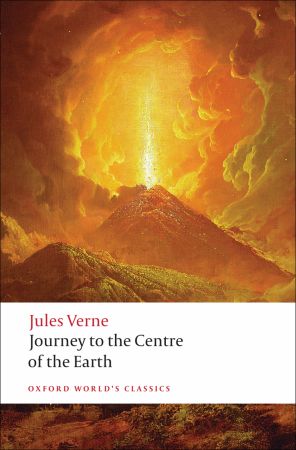 It was rather timely that I read this in light of what has been happening with Iceland’s volcanic eruptions, a small country and that, through the act of nature, had effectively stopped the world. In Journey, we follow an uncle-nephew team who attempts to travel to the centre of the Earth through a crater in an extinct volcano in Iceland.
It was rather timely that I read this in light of what has been happening with Iceland’s volcanic eruptions, a small country and that, through the act of nature, had effectively stopped the world. In Journey, we follow an uncle-nephew team who attempts to travel to the centre of the Earth through a crater in an extinct volcano in Iceland.
Professor Otto Lidenbrock, a rather eccentric geologist, stumbles across ancient runes in a book from the twelfth-century one day. The runes are written ancient Icelandic and once deciphered reveals that to be written by a famous fifteenth-century explorer, Arne Saknussemm, who was declared a heretic. Once the runes are eventually translated, they read:
Go down into the crater of Snaefells Yocul which the shadow of Scartaris caresses before the calends of July, O audacious traveller, and you will reach the centre of the Earth. I did it. Arne Saknussemm. – p. 25
So off Professor Lidenbrock goes, taking (or rather dragging) along his very reluctant nephew, Axel. From their home in Germany, they travel across Denmark to Iceland where they enlist the help of an eiderdown hunter, Hans, an icelandic of very stoic nature. While in Iceland, Professor Lidenbrock attempts to do more research on Saknussemm and what ensues from Lidenbrock’s host is a lovely ode to the wonders of reading and beauty of books:
“Every farmer, every fisherman knows how to read, and does read. We believe that books, instead of mouldering behind bars, far from interested examination, are meant to be worn out by readers’ eyes. So these books are passed from person to person, looked at, read and re-read; and often they do not come back to the shelves for a year or two.” – p. 51
As Lidenbrock, Axel and Hans make their way through the volcanic ash and down the crater they encounter dead ends, the threat of dehydration and starvation, hot mineral springs and, amazingly, an entire ocean deep down under the seabed of Europe. While deep within the earth’s craters the crew come across extinct animals, who are very much alive, and remnants of what seems to be early forms of human beings.
As fantastic as it all sounds, Verne has a way to make it all sound very scientific and believable but this is a reader who have absolutely no background in science and have not touched a beaker or bunsen burner since high school. This being my first Verne, I think it was a great introduction to his writing and imagination. His most popular story is the very well known Around the World in Eighty Days. Professor Lidenbrock was a very fun character but Axel was the most timid man I have come across recently. Reading about the volcanoes in Iceland, and Icelandic culture (although it was written by Frenchman) gives it a quite contemporary feel.